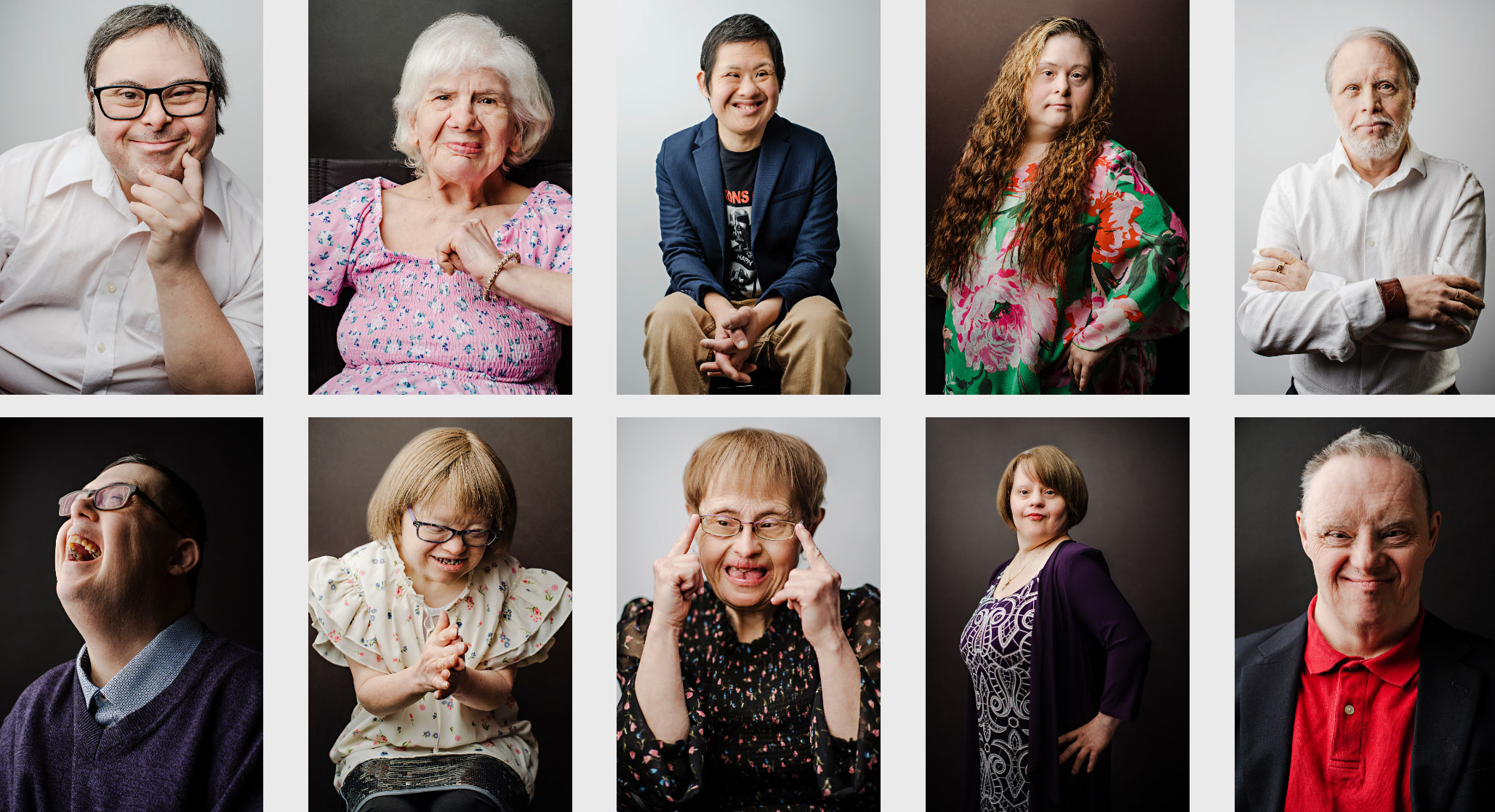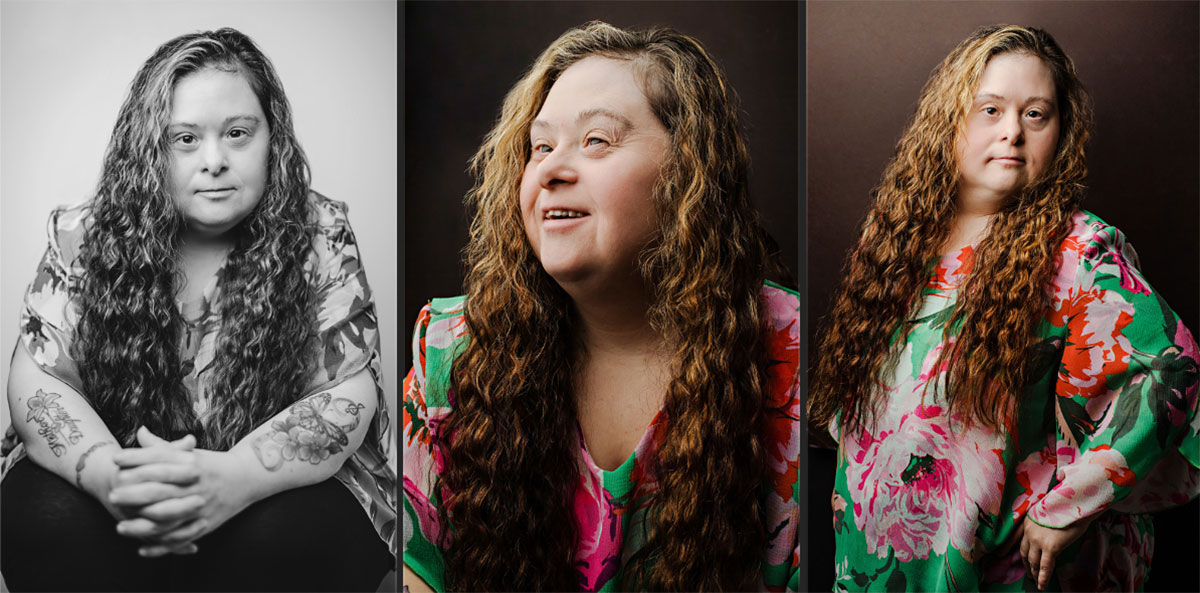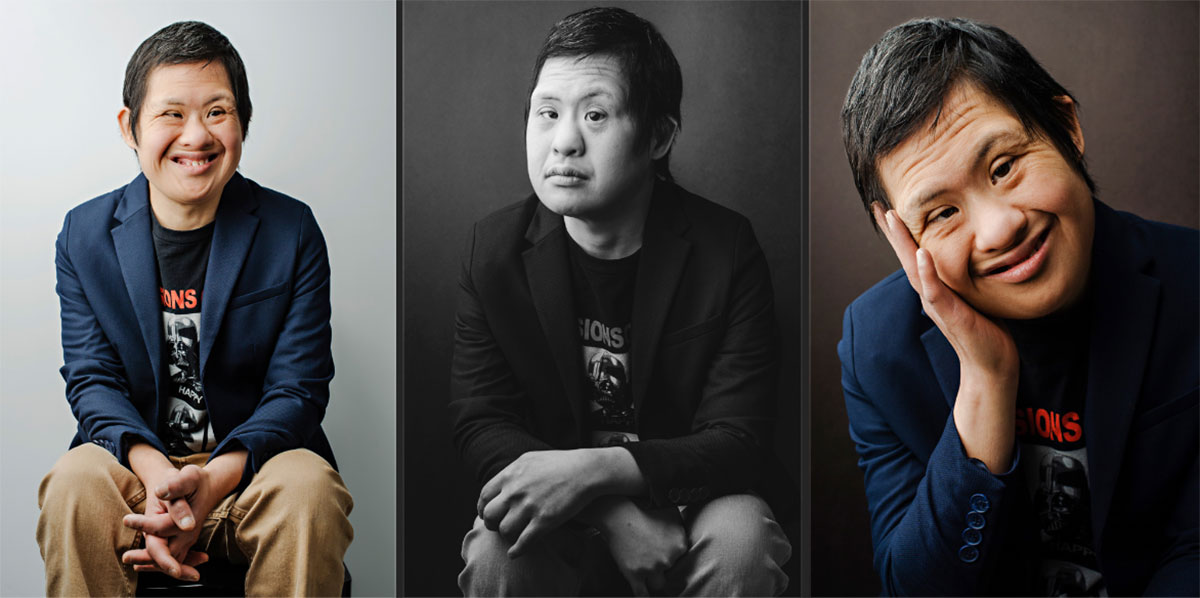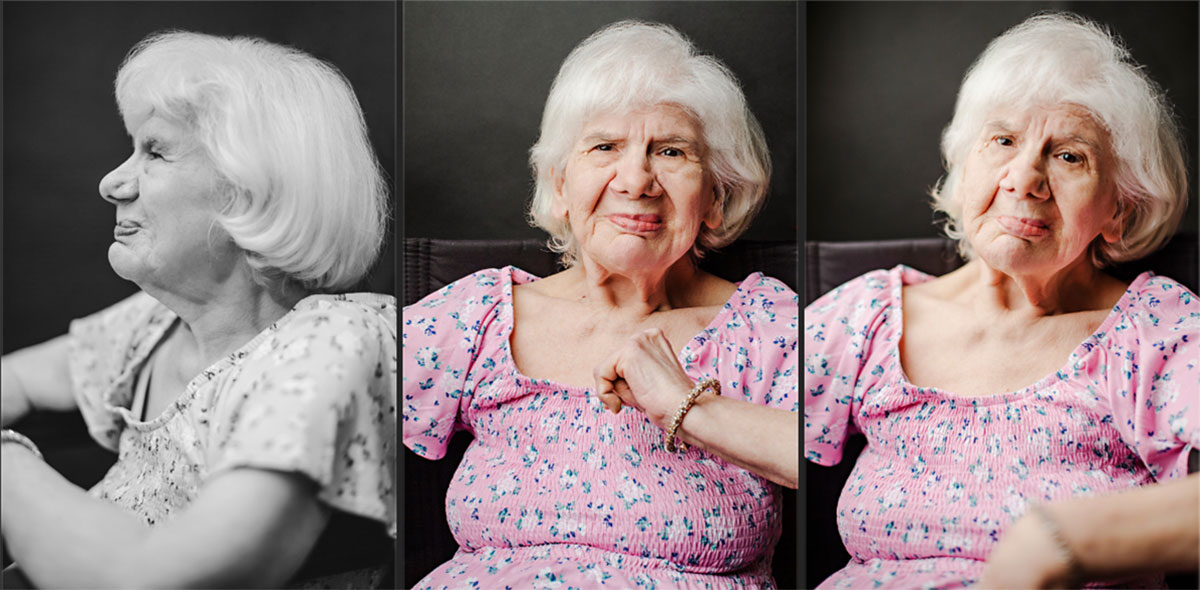
Powerful photo essay challenges people to rethink misconceptions about adults with Down syndrome
Life expectancy for Canadians with Down syndrome has more than doubled over the past 40 years—from 25 years in 1983 to over 60 years today. This can be attributed to advances in medical diagnostics and treatment.
Yet many people still have the false assumption that individuals with Down syndrome do not live into their senior years. This is partially due to a serious lack of representation of people with Down syndrome over 40 across all media, including the imagery used to represent the community.
A monumental photo essay, “Here I Am,” by the Canadian Down Syndrome Society (CDSS) and photographer Hilary Gauld of One for the Wall refutes this misconception. It features a powerful and indisputable series of portraits featuring seniors and adults with Down syndrome alongside their childhood selves.
“Our parents told us that Brigitte wouldn’t live past seven and now she is 75. She is thought to be one of the oldest living persons in Canada with Down syndrome.”
– Marianna, sister and caregiver of photo essay participant Brigitte
“After photographing Canadians with Down syndrome and their caregivers for almost a decade, adults with Down syndrome over the age of 40 have continued to be the least represented,” said Gauld. “While statistics show that the average life expectancy has increased for people with Down syndrome, the visibility of seniors and elders remains limited.”
Celebrating how far the Down syndrome community has come is an important focus of this project, which also shines a spotlight on a growing crisis in Canada—the healthcare system’s growing dependance on unpaid caregivers.
Already 75% of caregiving in Canada is done by unpaid caregivers. As they age, people with Down syndrome are at a higher risk for certain health conditions requiring additional care, such as Alzheimer’s Disease.It is imperative to ensure adequate information, health services and support are available to these individuals.
“As we continue to change the public narrative, this work spreads awareness about Down syndrome. Aging Canadians with Down syndrome and their caregivers should have comprehensive, unbiased information about aging issues, and have access to all of the government support that is available to them,” said Laura LaChance, Executive Director, CDSS. “No parent should be left asking ‘who will provide care for my child once I’m gone?’ This photo essay raises awareness and challenges the stereotype that people with Down syndrome don’t live long lives.”
The “Here I Am” photo essay can be viewed at CDSS.ca/Here-I-Am. To learn more about aging with Down syndrome, please visit CDSS.ca/Resources/Healthy-Aging and download Today and Tomorrow: A Guide to Aging with Down Syndrome.
About Canadian Down Syndrome Society:
Founded in 1987, The Canadian Down Syndrome Society (CDSS) is a national non-profit organization providing information, advocacy and education about Down syndrome. CDSS supports individuals with Down syndrome, their parents, families and communities through all stages of life, as well as educators, medical professionals and therapists. Visit http://www.cdss.ca for more information.




Comments